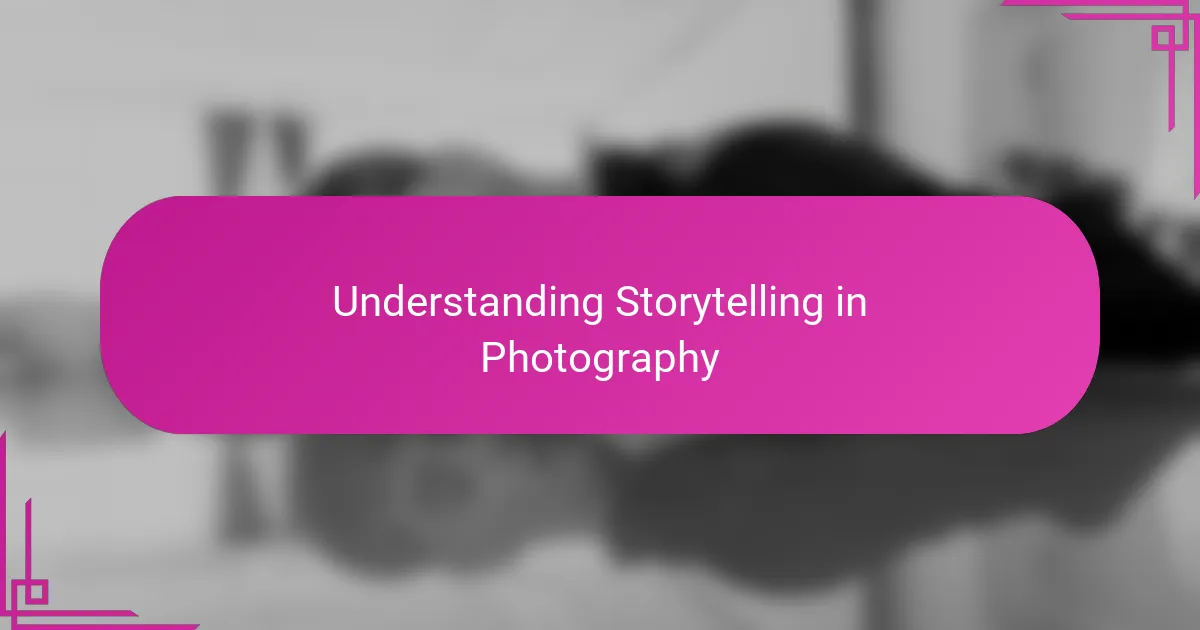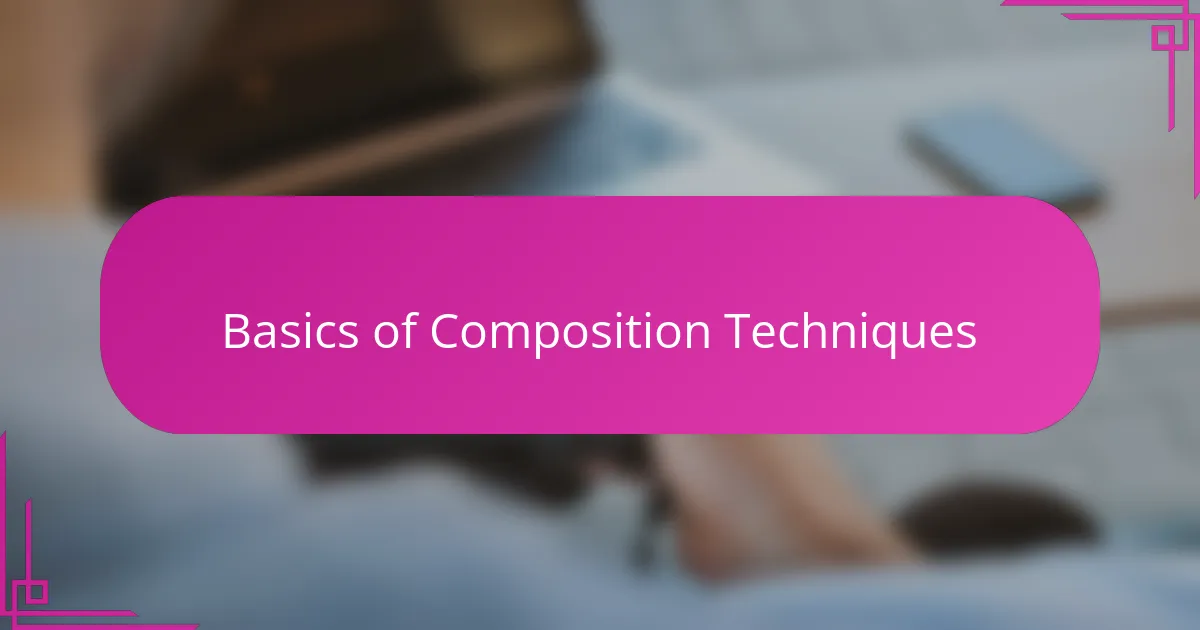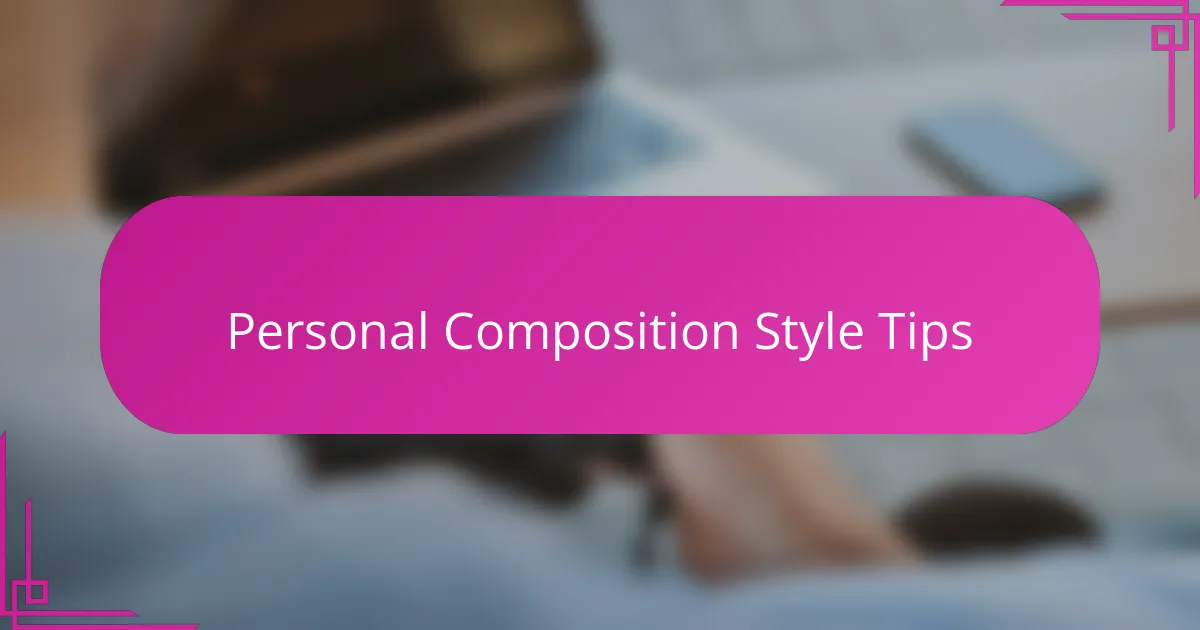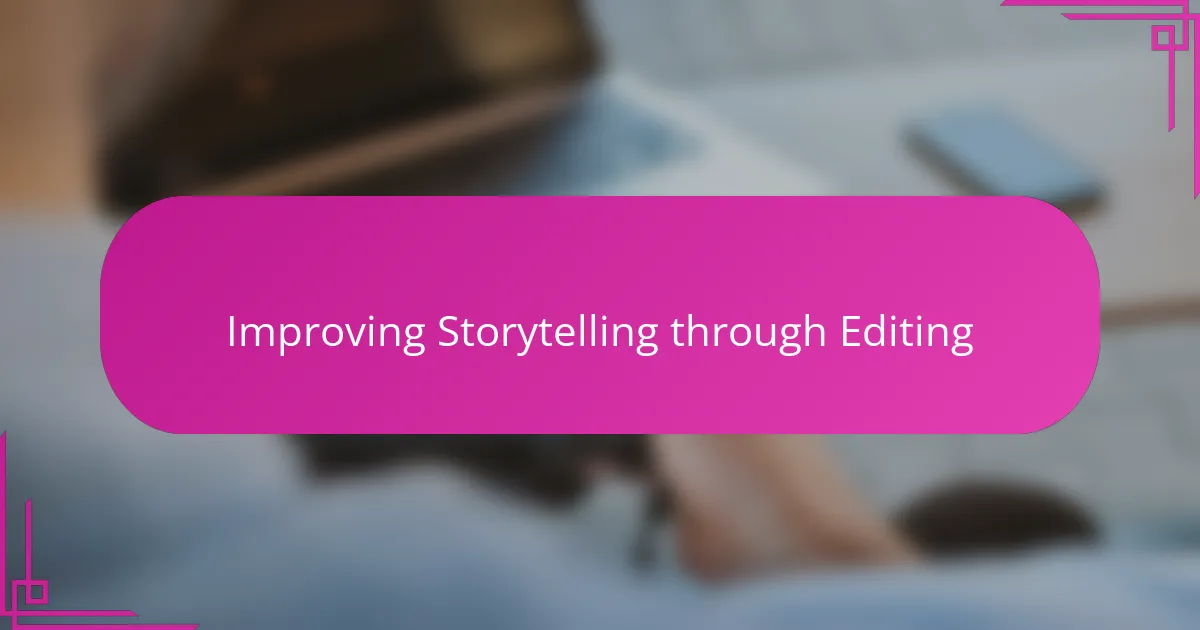Key takeaways
- Storytelling in photography transcends technical perfection; emotional depth and subject choice bring photos to life.
- Composition techniques, such as the rule of thirds and leading lines, guide viewer attention and enhance narrative engagement.
- Light influences the mood and emotional expression in photography; it can create intimacy or mystery through shadow contrast.
- Editing refines the story by emphasizing key elements and eliminating distractions, transforming raw images into compelling narratives.

Understanding Storytelling in Photography
Storytelling in photography is more than just capturing a moment; it’s about conveying a deeper message or emotion through the frame. I often find myself asking, what is the story behind this scene, and how can I translate that onto a single image? It’s fascinating how a well-composed photo can evoke memories or feelings without saying a word.
From my experience, understanding storytelling starts with recognizing the elements that make a scene meaningful—like expression, context, and lighting. When I first started, I focused too much on technical perfection and missed the emotional core. Only when I shifted my attention to what the image says rather than how it looks did my photos begin to resonate more deeply.
Have you ever looked at a photograph that felt alive, almost like it was whispering a story directly to you? That’s the power of storytelling in photography, and understanding how to harness it is what turns an ordinary snapshot into a compelling narrative.

Basics of Composition Techniques
Composition, to me, is the invisible thread guiding the viewer’s eye through the story I want to tell. I remember struggling with cluttered frames early on until I learned about the rule of thirds—it was like discovering a secret path that gently leads attention where it matters most. Have you ever noticed how placing your subject off-center makes an image feel more natural and engaging?
Lines and shapes also play a huge role in my composition. I often seek out leading lines like roads or fences to draw the eye deeper into the scene, creating a sense of journey or anticipation. It’s amazing how such simple elements can turn a static photo into a dynamic story, almost making you feel like you’re stepping inside the frame.
Balance and framing are techniques I find myself returning to again and again. Sometimes, a perfectly symmetrical shot feels too posed, but slight asymmetry or natural framing with trees or windows adds a subtle tension that keeps the viewer hooked. How do I decide what to include or exclude? That question powers my creative choices, constantly pushing me to refine how I emphasize the essence of the story through composition.

Using Light to Enhance Stories
Light is such a powerful storytelling tool because it sets the mood before anything else in the frame. I remember shooting one early morning where the soft, golden light gently wrapped around my subject’s face, instantly conveying a sense of calm and hope. Have you ever noticed how harsh midday sun can feel stark and unforgiving, while a low light glow makes a scene feel intimate and warm?
Sometimes, I use shadows to add mystery or tension, letting parts of the frame hide in darkness while others shine bright. It’s like telling half the story in light and leaving the rest to the viewer’s imagination. That contrast between light and shadow often becomes a silent conversation within the photo, guiding emotions without words.
I’ve found that paying attention to where the light falls can completely change how the story reads. Backlighting a subject to create a silhouette can emphasize solitude or strength, while sidelighting brings out texture and detail that hint at character or history. How you position your camera in relation to the light often dictates the emotional heartbeat of the image more than any pose or expression.

Choosing Subjects for Impact
Choosing the right subject is the cornerstone of impactful storytelling in my photography. I often ask myself, which figure or object truly embodies the emotion or message I want to share? Sometimes, it’s a weathered face full of stories, other times a solitary tree standing against a storm—each subject carries its own silent narrative waiting to be uncovered.
I’ve noticed that when I focus on subjects that resonate personally, my photos gain an authenticity that’s hard to fake. One memorable shoot involved capturing a street musician whose expressions revealed both struggle and passion; it was through him that the story found its voice. Have you ever felt a click inside when your subject’s energy matches your vision? That’s when the magic begins.
Sometimes, simplicity is the most powerful choice. By isolating a single subject against a minimal background, I give viewers space to connect deeply without distractions. It’s like handing over the microphone to that one story, confident it will speak louder than a crowded scene ever could. What subject will hold your viewer’s attention like that?

Personal Composition Style Tips
Developing a personal composition style has been a journey of trial and error for me. I learned early on that trusting my intuition often leads to more authentic images than rigidly following rules. Have you ever caught yourself hesitating to break a composition guideline, only to realize that bending it tells your story better?
One tip I always come back to is simplifying the frame. I try to remove anything that distracts from the core emotion or message. I recall a shoot where I cropped tightly around a subject’s eyes, and the raw intensity was undeniable—sometimes less truly is more.
I also experiment with unconventional angles to add personality to my photographs. Shooting from low or high perspectives not only changes the visual impact but also how the story feels. It’s those fresh viewpoints that often surprise me, capturing emotions that a standard eye-level shot might miss. Have you given yourself permission to explore new perspectives lately?

Practical Composition Examples
When I think about practical composition examples, one that always stands out is using the rule of thirds to place a subject just off-center. I remember a portrait session where shifting my subject slightly to the left transformed a stiff shot into a more natural, inviting image. Have you tried moving your focal point away from the center to see how it changes the story your photo tells?
Another approach I use often involves leading lines. In a landscape I shot last summer, the winding path acted like a visual invitation, pulling viewers into the scene and sparking a sense of adventure. That moment reminded me how composition isn’t just about aesthetics—it’s about guiding the eye purposefully through the narrative.
Sometimes, the simplest choices create the most impact. During a street shoot, isolating a single figure against an uncluttered background allowed the story to breathe without distractions. It was in that quiet space that the subject’s emotion spoke loudest, proving to me that effective composition is often about what you leave out as much as what you include.

Improving Storytelling through Editing
Editing is where the story truly takes shape for me. After the shoot, I sift through dozens of images, searching for the ones that not only look good but carry the emotional weight I want to share. Have you ever noticed how a single edit can transform a raw photo into something that feels alive? That’s the magic of thoughtful selection and refinement.
I often find that subtle adjustments—cropping tightly to cut distractions or tweaking contrast to highlight a subject’s expression—can make a world of difference. In one project, narrowing the frame around my subject’s hands telling a quiet story made the image far more intimate and compelling. It taught me how editing isn’t just about fixing flaws but about emphasizing the story’s heart.
Sometimes, I challenge myself to ask: What does this image say after the edits? If the story gets clearer and stronger, I know I’m on the right track. Editing is not just technical work; it’s a creative dialogue between me and the photograph, enhancing its narrative one deliberate choice at a time.